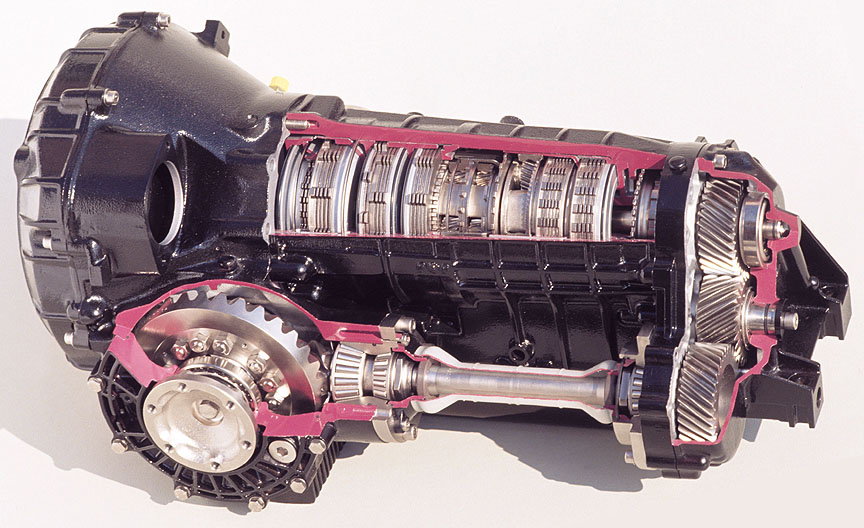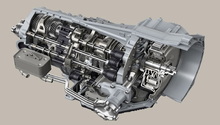Porsche 997: Tiptronic vs. Manual Transmission
When buying a car, one thing that could really influence the driving experience is the gearbox. Is a Porsche 997 best suited for a manual gearbox or a Tiptronic (automatic) gearbox? Read on to find out more about the pros and the cons with each gearbox.
This article applies to the Porsche 997 Carrera and Turbo models (2005-2008).
This article does not apply to the GT cars (Porsche 997 GT3 and GT2). The GT cars were only delivered with manual gearboxes. So if you are considering getting an automatic gearbox, the GT cars are not what you are looking for.
There is a long ongoing debate if the manual gearbox or the Tiptronic (automatic) gearbox is the first hand choice for Porsche 997 drivers. Which gearbox you choose will obviously depend (to some extent) on how you plan to use the car. Is your car intended mainly for commuting in heavy traffic, for track use, or for sprinted road use in the weekends? Another parameter is, of course, personal preference. However, you should not conclude that the Tiptronic gearbox is only suitable for cruising on the road. Some of the purists may frown upon the Tiptronic gearbox, since a manual gearbox is the "traditional" sports car attribute, but some people use their Tiptronic equipped cars mainly for track driving and they really enjoy it. Then, some people have tried the Tiptronic gearbox, but have found it slow and not as engaging as the manual.
An interesting fact is that in a test using two Porsche 997 Turbos, the car equipped with a Tiptronic gearbox were just as fast on the sprint 0-60 mph as the car equipped with a manual gearbox. Both cars tested did the sprint 0-60 mph in 3.4 seconds. So the Tiptronic gearbox is definitely shifting gears very fast. However, on the Carrera models, the Tiptronic equipped cars are a tenth of a second slower than the manual transmission.
Tiptronic Gearbox
The Porsche 997 Tiptronic gearbox is a 5-speed gearbox, and it has two ways of operation. It can either function as a normal automatic gearbox handling all the gear shifting, or it can work in a manual mode where the driver can switch the gears at his own discretion. The manual gear shifting can be done either with the gear lever, or by pushing dedicated buttons on the steering wheel. By pushing the lever forward, you upshift. By pulling backwards, you downshift. Even in the "manual" mode the gearbox will stop the driver from making mistakes like downshifting in the middle of a tight corner, which could potentially lead to a crash. This is an important innovation compared to traditional automatic gearboxes where there is no such control.
One negative thing with the Tiptronic gearbox (compared to the manual) is the 70-pound weight penalty.

Manual Gearbox
The Porsche 997 manual gearbox is a 6-speed gearbox. The manual gearbox is the first hand choice by many people who want to attend occasional track activities. The Tiptronic gearbox has a small lag when shifting gears that the manual gearbox doesn't have. With the manual gearbox, it is entirely up to the driver how fast the gears can be changed.

Scheduled Maintenance
The scheduled maintenance for the manual as well as the tiptronic gearbox is every 120,000 km or every 12 years. On the manual gearbox, it is only the fluid that has to be replaced. On the Tiptronic gearbox, both the fluid and a gearbox filter has to be replaced.
Common Issues
Both the manual as well as the Tiptronic gearboxes are known to be of high-quality, and without serious issues. It is hard to find anyone having serious problems with their gearboxes based on the available information on the Internet.
Some people find the manual gearbox to be more clunky and have noticeably more resistance when cold, but this seems to be considered normal. It is also important to follow the service intervals (fluid change) for the gearboxes. If the car is used a lot on track, it could also be a good idea to change the fluid more frequently. Many people opt to do this annually because changing the manual transmission fluid only takes about an hour to do, and is not labor intensive.
Featured Video: Transmission, Flywheel, or Clutch Problems
Related Discussions, and Sites
- Changed Manual Transmission Fluid - Rennlist.com
- Tiptronic Faster Than Manual - Rennlist.com
- 2007 Porsche 911 Turbo Tiptronic - CarandDriver.com
- Glossary - Stuttcars.com






